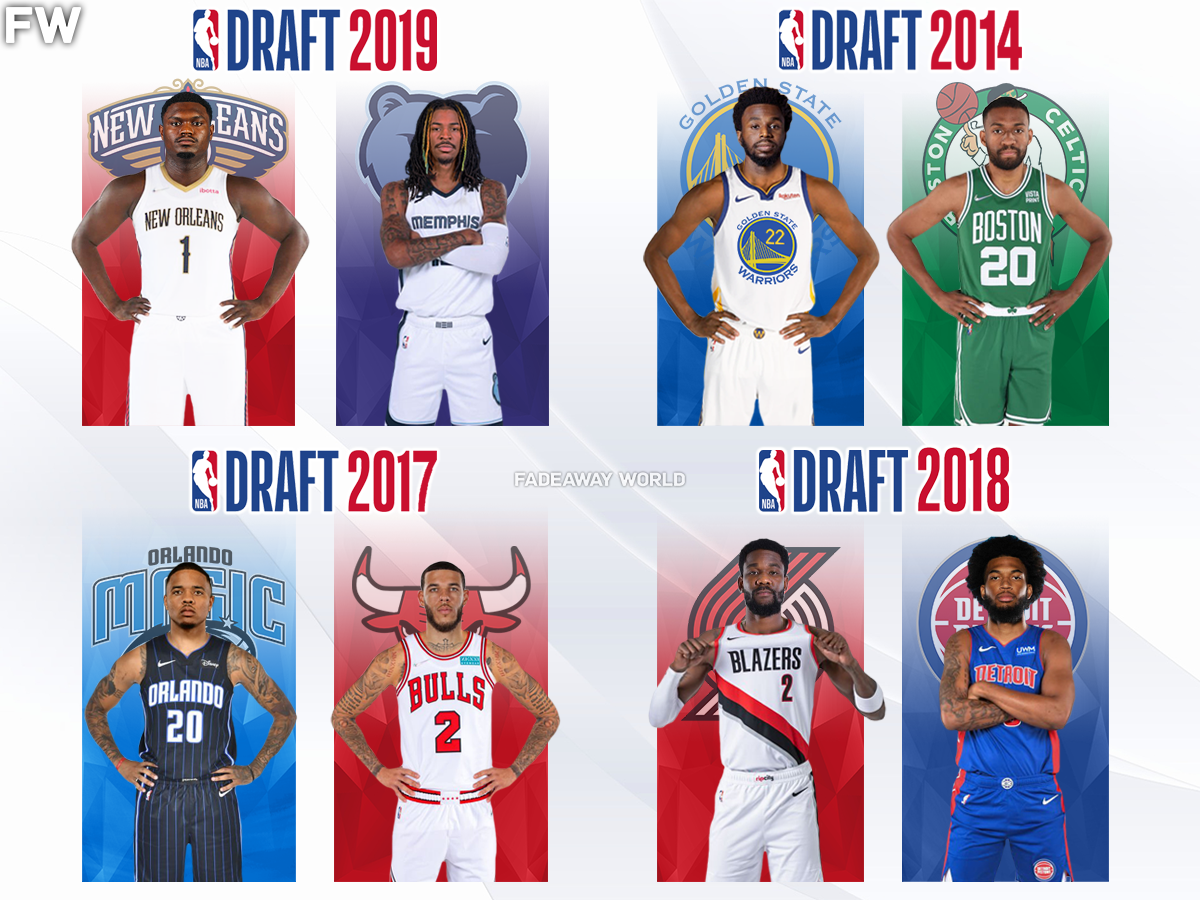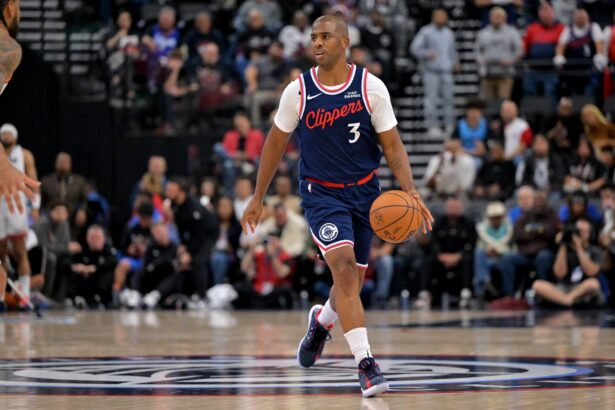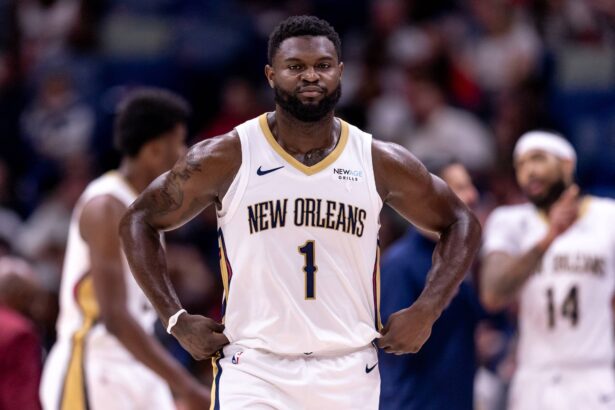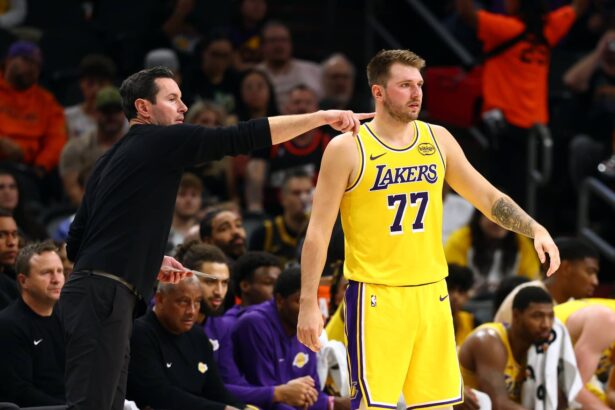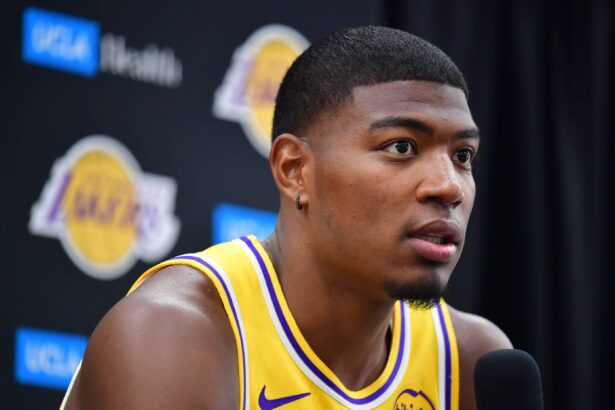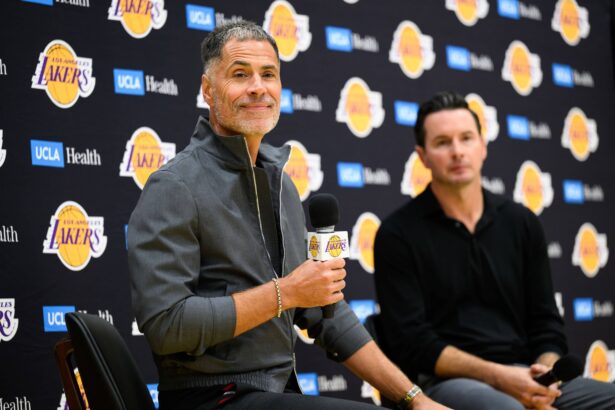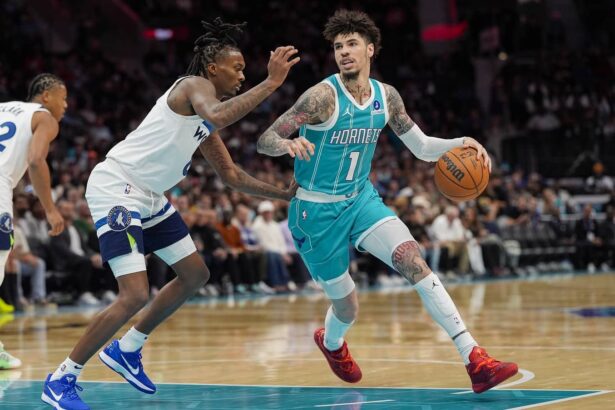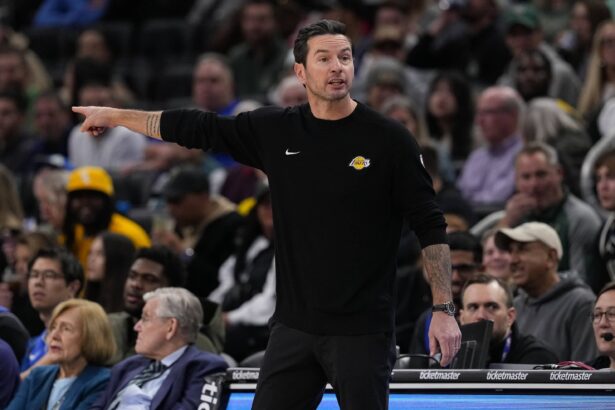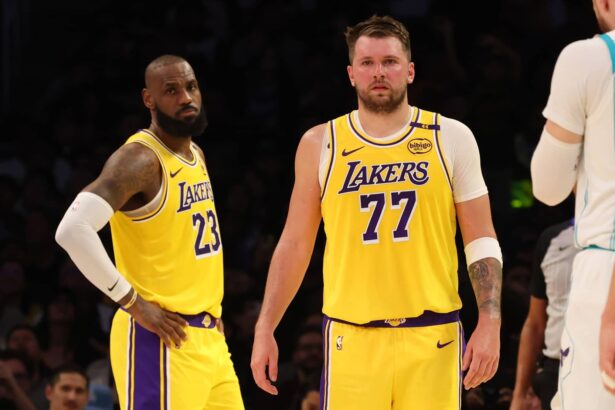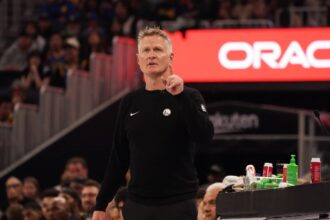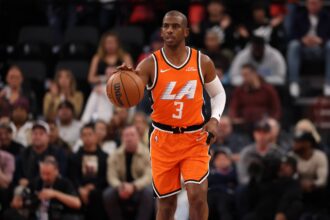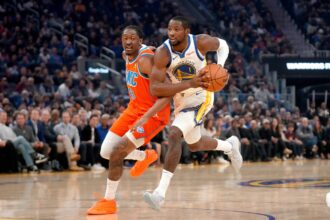The NBA Draft stands as a pivotal moment in the basketball world, where franchises eagerly select young talents with the hope of securing future stars. In 1990, the NBA started with the Lottery System after changing its format three times since 1947:
- Honorable Mention
- Zion Williamson & Ja Morant (2019 NBA Draft)
- 10. Andrea Bargnani & LaMarcus Aldridge (2006 NBA Draft)
- 9. Andrew Wiggins & Jabari Parker (2014 NBA Draft)
- 8. Deandre Ayton & Marvin Bagley (2018 NBA Draft)
- 7. Kwame Brown & Tyson Chandler (2001 NBA Draft)
- 6. Joe Smith & Antonio McDyess (1995 NBA Draft)
- 5. Markelle Fultz & Lonzo Ball (2017 NBA Draft)
- 4. Kenyon Martin & Stormile Swift (2000 NBA Draft)
- 3. Andrew Bogut & Marvin Williams (2005 NBA Draft)
- 2. Anthony Bennett & Victor Oladipo (2013 NBA Draft)
- 1. Michael Olowokandi & Mike Bibby (1998 NBA Draft)
From 1947–1965: Territorial Draft Picks.
From 1966 to 1984: Coin Flip.
From 1985 up to 1989, the NBA started its early Lottery System, and from 1990 to the present day there’s the Lottery System as we know it.
In this article, we delve into the most disappointing No. 1 and No. 2 picks in the modern Lottery Era, from 1990 to 2023.
Honorable Mention
Zion Williamson & Ja Morant (2019 NBA Draft)
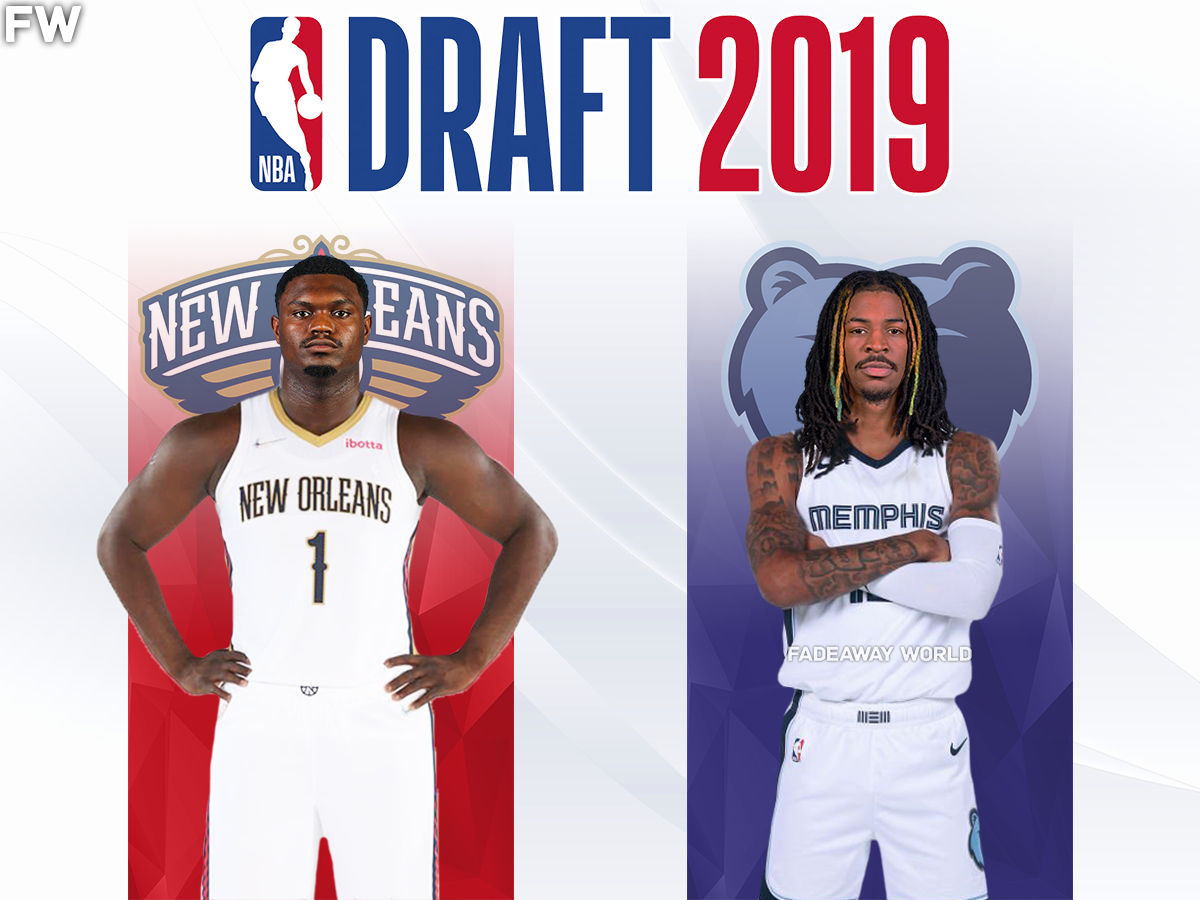
Zion Williamson’s stats: 25.3 PPG, 6.8 RPG, 3.8 APG, 0.9 SPG, 0.5 BPG
Ja Morant’s stats: 22.4 PPG, 4.8 RPG, 7.4 APG, 1.0 SPG, 0.3 BPG
The 2019 NBA Draft marked the arrival of two highly-touted prospects, Zion Williamson and Ja Morant. With their explosive playing styles and impressive college performances, the expectations surrounding these young talents were sky-high. Unfortunately, as the seasons unfolded, the narrative for both players took unexpected turns.
Zion Williamson showcased an immediate impact, living up to the hype with remarkable scoring and athleticism. His stats of 25.3 points per game, 6.8 rebounds, and 3.8 assists per game reflected his ability to contribute across various facets of the game. Yet, despite his individual brilliance, concerns arose about his ability to stay healthy and follow a good diet, while also having off-court drama last offseason with a pornstar. Injuries plagued Zion, preventing him from maintaining a consistent presence on the court since his second year in the league.
On the other side, Ja Morant exhibited his playmaking prowess with stats of 22.4 points, 4.8 rebounds, and an impressive 7.4 assists per game. The Memphis Grizzlies point guard provided hope for the franchise, but off-court issues cast a shadow on his potential. Recent controversies surrounding Morant’s social media posts involving firearms led to a suspension, raising questions about his decision-making and maturity.
While both players undoubtedly possess immense talent, their journeys have yet to translate into significant postseason success. The initial excitement has been tempered by the realization that reaching the pinnacle of the NBA requires more than individual brilliance—it demands consistent availability, responsible conduct, and the ability to lead a team deep into the playoffs. As Morant and Zion continue their careers, the narrative of their draft class remains an intriguing storyline in the ever-evolving saga of the NBA.
10. Andrea Bargnani & LaMarcus Aldridge (2006 NBA Draft)
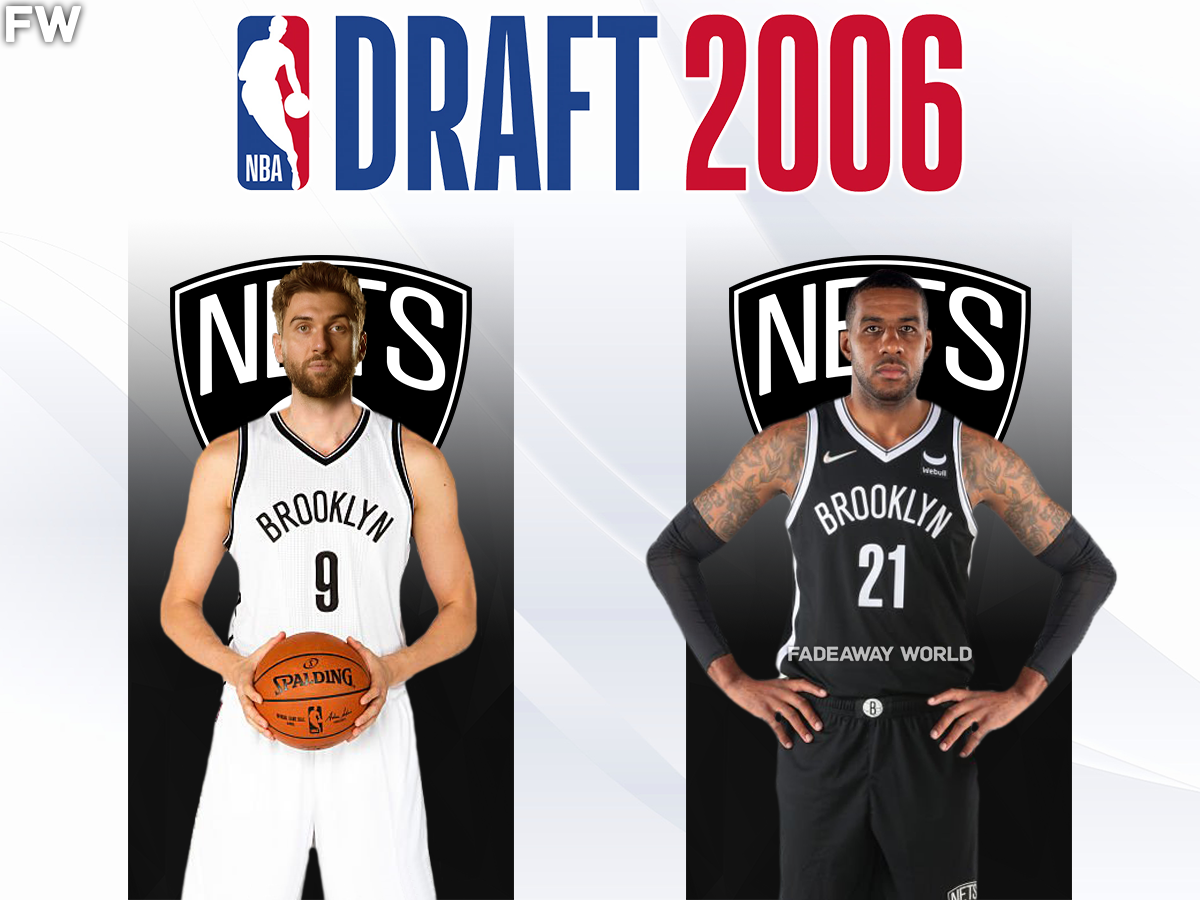
Andrea Bargnani’s stats: 14.3 PPG, 4.6 RPG, 1.2 APG, 0.5 SPG, 1.2 BPG
LaMarcus Aldridge’s stats: 19.4 PPG, 8.2 RPG, 2.0 APG, 0.6 SPG, 1.1 BPG
The trajectory of Andrea Bargnani and LaMarcus Aldridge, the top two picks in the 2006 NBA Draft, unfolded with a mix of promise and unfulfilled expectations, each player grappling with unique challenges.
Selected first overall by the Toronto Raptors, Bargnani brought a unique skill set as a seven-footer with perimeter shooting ability. Sadly, his struggles on the defensive end and inconsistent overall play hindered his impact. Despite flashes of scoring brilliance, Bargnani failed to evolve into the defensive anchor and franchise cornerstone that the Raptors had envisioned, contributing to the disappointment surrounding his career.
Bargnani played 7 seasons in Toronto until ultimately leaving as a failed draft selection to the New York Knicks, ending his NBA journey a couple of years later donning the Brooklyn Nets jersey. As seasons went by, he could never blossom into a big-time scorer to cover for his lack of defense.
LaMarcus Aldridge, chosen second overall by the Chicago Bulls and traded to the Portland Trail Blazers, emerged as a consistent scorer and rebounder. However, the disappointment lies in the unmet expectations of leading his team to deep playoff runs or contending for championships. Despite Aldridge’s individual success, the Blazers couldn’t translate regular-season achievements into postseason glory during his prime years, contributing to the perception of an unfulfilled career.
In retrospect, Bargnani’s defensive shortcomings and inability to become a franchise cornerstone, along with Aldridge’s struggle to propel his team to championship contention, underline the challenges and complexities that can accompany high draft picks. The stories of Bargnani and Aldridge serve as cautionary tales in the unpredictable journey of NBA careers, where individual brilliance may not always translate into team success or meet the lofty expectations set during draft day.
9. Andrew Wiggins & Jabari Parker (2014 NBA Draft)
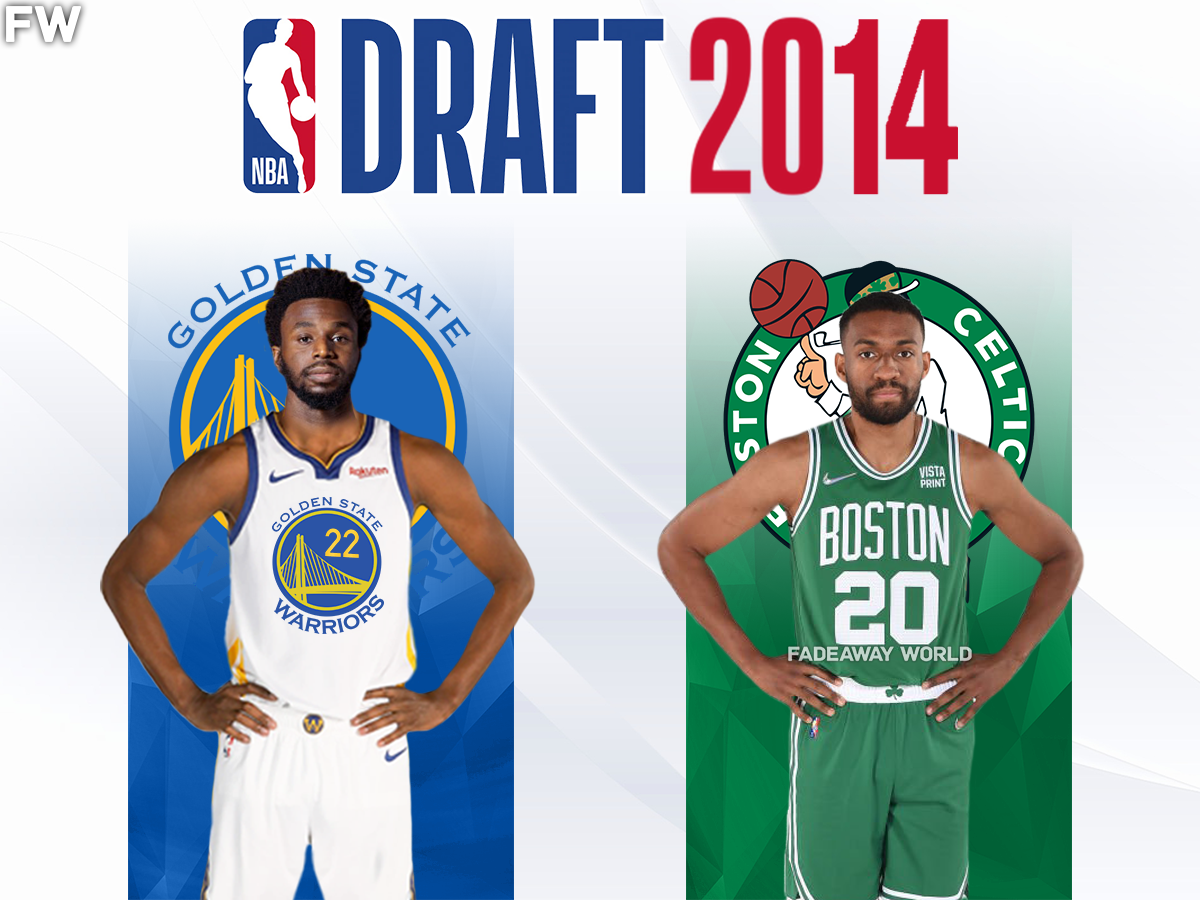
Andrew Wiggins’ stats: 18.9 PPG, 4.5 RPG, 2.3 APG, 1.0 SPG, 0.7 BPG
Jabari Parker’s stats: 14.8 PPG, 5.7 RPG, 2.1 APG, 1.0 SPG, 0.4 BPG
The 2014 NBA Draft spotlighted the selections of Andrew Wiggins and Jabari Parker as the first and second overall picks, each carrying immense expectations into their professional careers.
Andrew Wiggins, initially drafted by the Cleveland Cavaliers and later traded to the Minnesota Timberwolves, faced scrutiny early in his career despite showcasing impressive scoring abilities. Wiggins never became the cornerstone for the franchise nor the superstar caliber player that he was expected to be in Minnesota and failed to reach all expectations.
A pivotal trade to the Golden State Warriors revitalized Wiggins’ trajectory. In 2022, he not only earned his first All-Star nod but also played a pivotal role in the Warriors’ championship run, marking a significant redemption in his career.
In contrast, Jabari Parker joined the Milwaukee Bucks as the second overall pick, offering a versatile offensive game with averages of 14.8 points per game. However, injuries plagued Parker’s journey, hindering his ability to establish himself as a cornerstone player for the Bucks. Parker played less than 9 seasons in the NBA with multiple teams and this year went overseas to continue his career.
While both players demonstrated glimpses of their potential, the narrative surrounding Wiggins and Parker is one of contrasting fortunes. Wiggins, with a change of scenery, found success on a championship-caliber team, while Parker faced challenges on the injury front.
8. Deandre Ayton & Marvin Bagley (2018 NBA Draft)
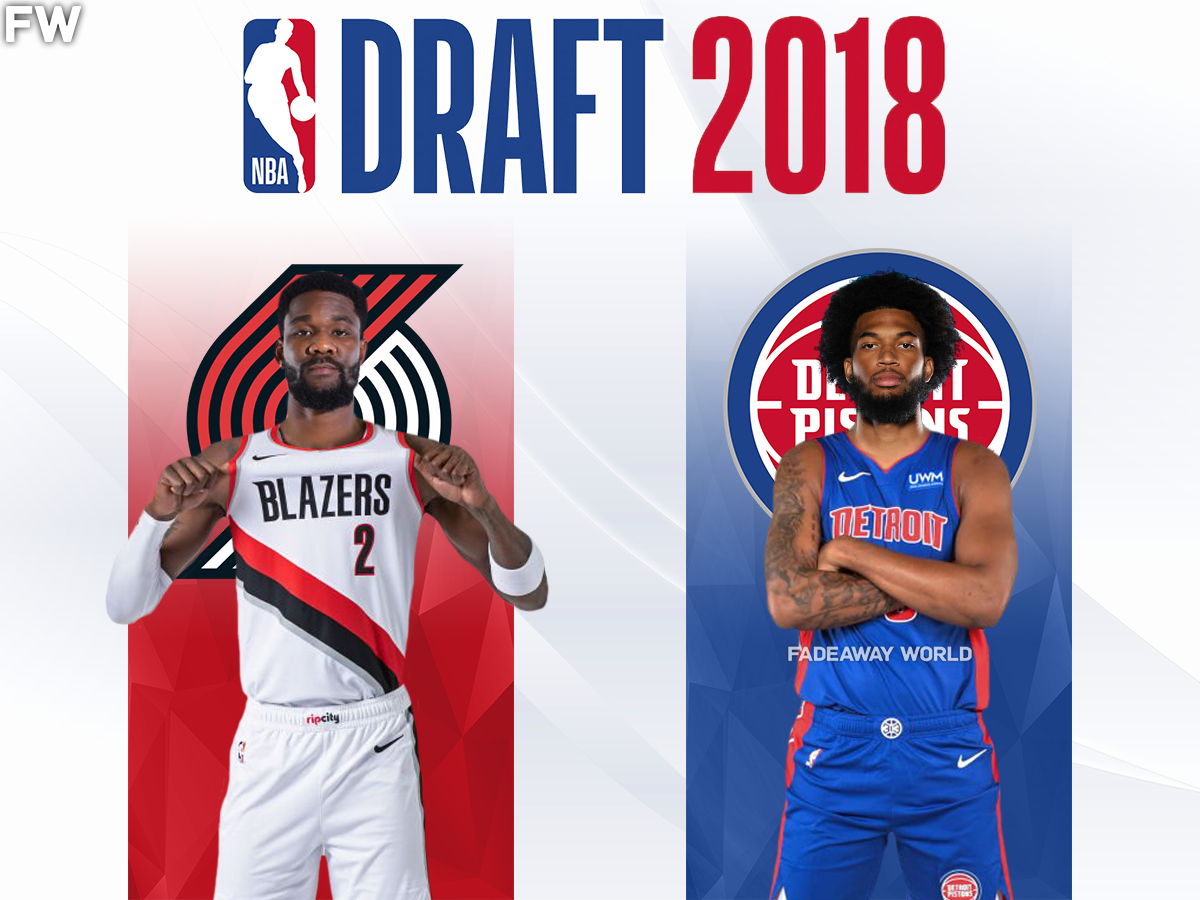
Deandre Ayton’s stats: 16.4 PPG, 10.5 RPG, 1.5 APG, 0.7 SPG, 1.0 BPG
Marvin Bagley’s stats: 13.0 PPG, 7.0 RPG, 1.0 APG, 0.5 SPG, 1.0 BPG
The 2018 NBA Draft brought forth promises of a bright future with Deandre Ayton and Marvin Bagley, selected as the first and second overall picks, respectively. These two big men entered the league with distinct skill sets, each poised to make a substantial impact on their respective teams.
Deandre Ayton, chosen by the Phoenix Suns, quickly demonstrated his effectiveness on the court. With averages of 16.4 points and 10.5 rebounds per game, Ayton showcased his prowess as a dominant force in the paint. His shot-blocking ability, exemplified by 1.0 blocks per game, added an extra layer to his game. Ayton’s contributions played a crucial role in the Suns’ journey to the NBA Finals in the 2020-2021 season.
Conversely, Marvin Bagley, drafted by the Sacramento Kings, faced challenges in meeting the expectations set for a second-overall pick. While Bagley’s stats of 13.0 points and 7.0 rebounds per game indicated a level of productivity, injuries hampered his ability to establish consistency on the court. Bagley struggled to remain healthy, limiting his impact on the Kings’ performance and raising concerns about his long-term durability.
As the seasons progressed, the narrative surrounding Ayton and Bagley evolved. Ayton emerged as a pivotal part of the Suns’ success, showcasing his ability to contribute to a winning team. Unfortunately, this season marked his last chapter in Phoenix, as he was shipped to the Portland Trail Blazers after a couple of seasons where he fell behind on his progress.
Meanwhile, Bagley found himself battling not just opponents on the court but also the shadows of injuries that threatened to define his early career. A move to the Detroit Pistons seemed like a fresh start for Bagley last season, but with Detroit in such poor form during this current campaign, Bagley’s development is still nowhere to be found.
7. Kwame Brown & Tyson Chandler (2001 NBA Draft)
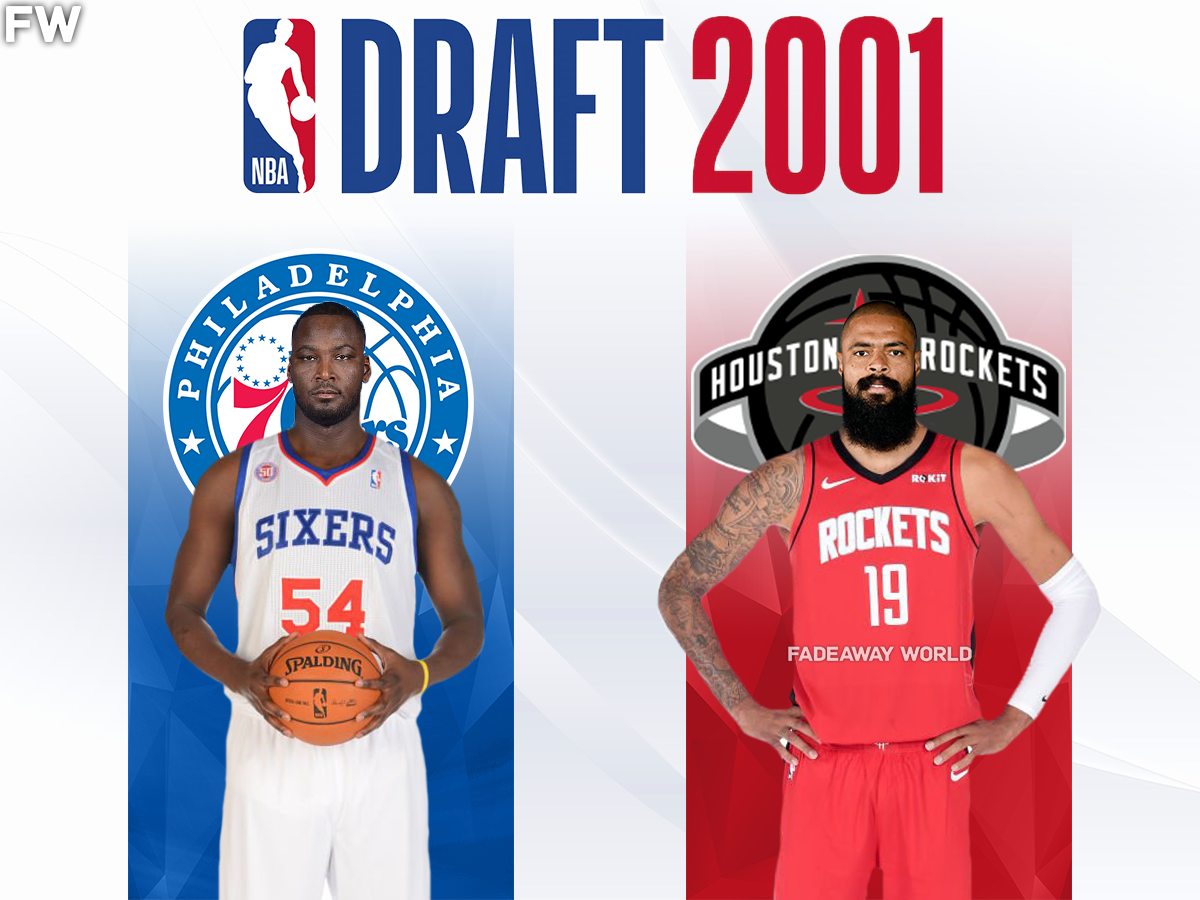
Kwame Brown’s stats: 6.6 PPG, 5.5 RPG, 0.9 APG, 0.6 SPG, 0.6 BPG
Tyson Chandler’s stats: 8.4 PPG, 9.2 RPG, 1.2 APG, 0.7 SPG, 1.3 BPG
The 2001 NBA Draft unfolded with grand expectations for the first two picks, Kwame Brown and Tyson Chandler, both selected straight out of high school. As the Washington Wizards took a chance on Kwame Brown with the first overall pick, and the Los Angeles Clippers promptly selected Tyson Chandler as the second overall pick, the league anticipated the rise of two promising young talents.
Kwame Brown’s journey began with significant hype, but the reality proved to be different. The power forward/center struggled to live up to the expectations associated with a top pick. Averaging 6.6 points and 5.5 rebounds per game throughout his career, Brown faced challenges on both ends of the court. His time in the league was marked by inconsistency, and he failed to become the impactful player many envisioned. Arguably, Kwame Brown is considered the worst No. 1 pick in NBA History by many.
In contrast, Tyson Chandler found success, albeit in a different manner. While his offensive contributions were more modest, with 8.4 points per game, Chandler’s defensive prowess and rebounding became his calling cards. With averages of 9.2 rebounds and 1.3 blocks per game, he evolved into a reliable defensive anchor and played a crucial role in the Dallas Mavericks’ 2011 championship run.
The 2001 NBA Draft serves as a reminder that the path to success in the NBA is unpredictable. Kwame Brown’s struggles highlight the challenges that can arise when immense expectations are placed on young shoulders. On the other hand, Tyson Chandler’s journey showcases the importance of resilience and finding one’s niche within a team. In the ever-unfolding narrative of the NBA, the stories of Brown and Chandler stand as a testament to the unpredictable nature of draft outcomes and the diverse trajectories players can take in their careers.
6. Joe Smith & Antonio McDyess (1995 NBA Draft)
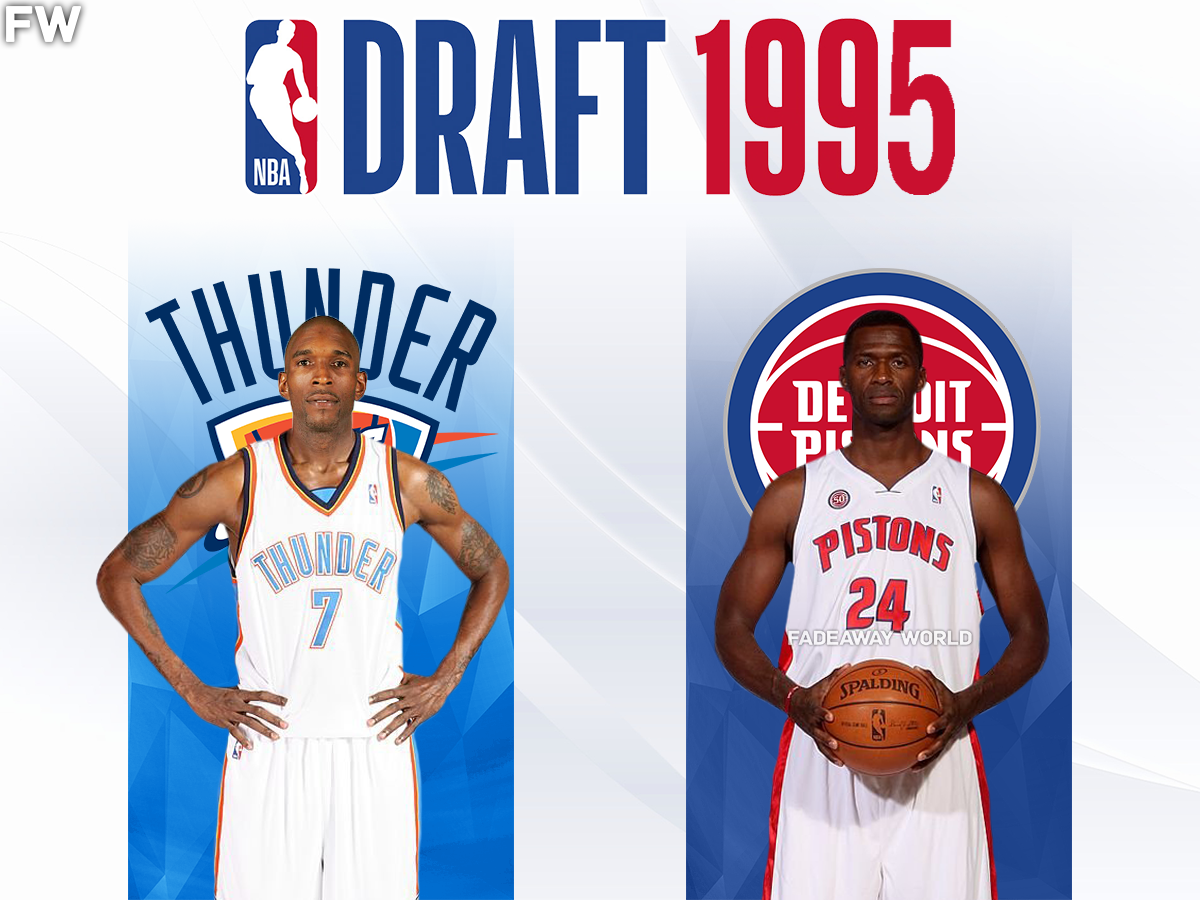
Joe Smith’s stats: 10.9 PPG, 6.4 RPG, 1.0 APG, 0.7 SPG, 1.0 BPG
Antonio McDyess’ stats: 12.0 PPG, 7.5 RPG, 1.3 APG, 1.0 SPG, 1.6 BPG
The 1995 NBA Draft brought forth the selections of Joe Smith and Antonio McDyess as the first and second overall picks, respectively. Both entering the league with immense potential, they embarked on journeys that unfolded in ways few could have predicted.
Joe Smith, chosen by the Golden State Warriors, made an immediate impact with his scoring ability and shot-blocking skills. Averaging 10.9 points and 6.4 rebounds per game throughout his career, Smith proved to be a valuable asset in the frontcourt. Despite that, the expectations associated with being the first overall pick may have cast a shadow over his career, as his contributions never fully reached the heights anticipated for such a high selection.
Smith left Golden State for Minnesota after an unimpressive run with the team, in hopes that the Timberwolves would revamp his career, but an under-the-table contract hindered that opportunity, losing him several millions.
Meanwhile, Antonio McDyess took his talents to the Denver Nuggets as the second overall pick. McDyess showcased versatility in his game, contributing not only as a scorer with 12.0 points per game but also as a dominant force on the boards and a shot-blocker, averaging 7.5 rebounds and 1.6 blocks per game. His well-rounded skills allowed him to have a more sustained impact, becoming a respected figure in the league.
5. Markelle Fultz & Lonzo Ball (2017 NBA Draft)
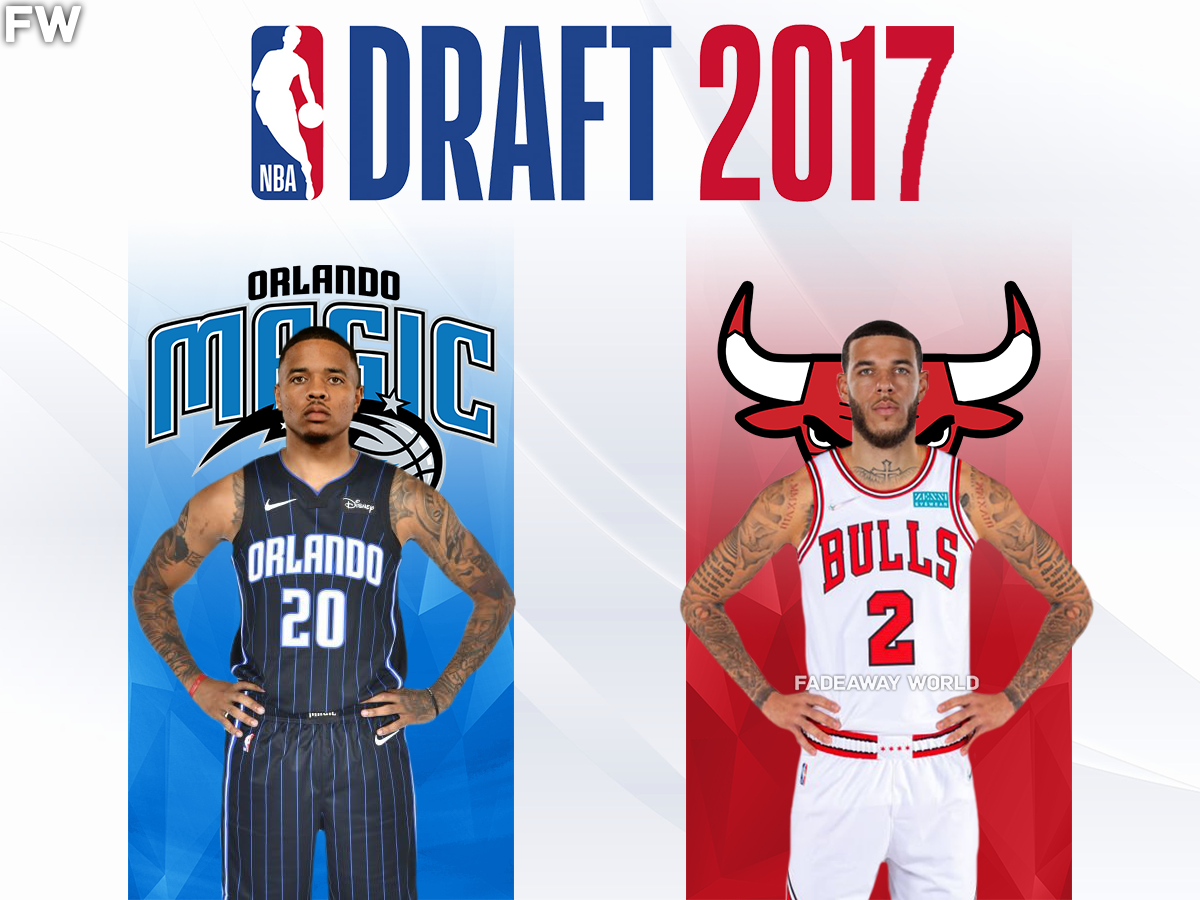
Markelle Fultz’ stats: 11.8 PPG, 3.5 RPG, 5.0 APG, 1.2 SPG, 0.3 BPG
Lonzo Ball’s stats: 11.9 PPG, 5.7 RPG, 6.2 APG, 1.5 SPG, 0.6 BPG
The 2017 NBA Draft witnessed the selections of Markelle Fultz and Lonzo Ball as the first and second overall picks, both heralded for their unique skill sets and potential to shape the future of their respective franchises.
Markelle Fultz, chosen by the Philadelphia 76ers, entered the league with high expectations as a versatile guard. However, his early career was plagued by injuries and a mysterious shooting ailment that affected his performance. Averaging 11.8 points, 3.5 rebounds, and 5.0 assists per game, Fultz struggled to find consistency and faced challenges in living up to the expectations of a top draft pick.
On the other hand, Lonzo Ball joined the Los Angeles Lakers with immense hype, largely fueled by his exceptional passing and playmaking abilities. Ball showcased his well-rounded game with averages of 11.9 points, 5.7 rebounds, and an impressive 6.2 assists per game. While his scoring output may not have reached astronomical heights, Ball’s impact on the game extended beyond mere point production, making him a valuable asset on the court.
As their careers progressed, both players faced criticism and scrutiny, but Lonzo Ball found a way to reinvent himself with a change of scenery. His improved shooting and continued playmaking prowess earned him recognition as a key contributor for the Chicago Bulls, showcasing resilience and adaptability until a strange knee injury sidelined him for the last season and the current one, with his NBA future still in the air.
For Fultz, his trade to the Orlando Magic seemingly revamped his career as a key contributor for the upcoming Eastern Conference powerhouse, although more injuries and the presence of other perimeter pieces like Cole Anthony, Jalen Suggs, and Anthony Black have pushed him back in the rotation.
The stories of Fultz and Ball underscore the unpredictable nature of NBA careers. Injuries, expectations, and personal growth all play significant roles in shaping the trajectory of players selected at the pinnacle of the draft. As Fultz seeks to overcome setbacks and Lonzo Ball continues to evolve in his career, their narratives serve as a reflection of the challenges and opportunities that define the journey from draft night to a lasting impact in the NBA.
4. Kenyon Martin & Stormile Swift (2000 NBA Draft)
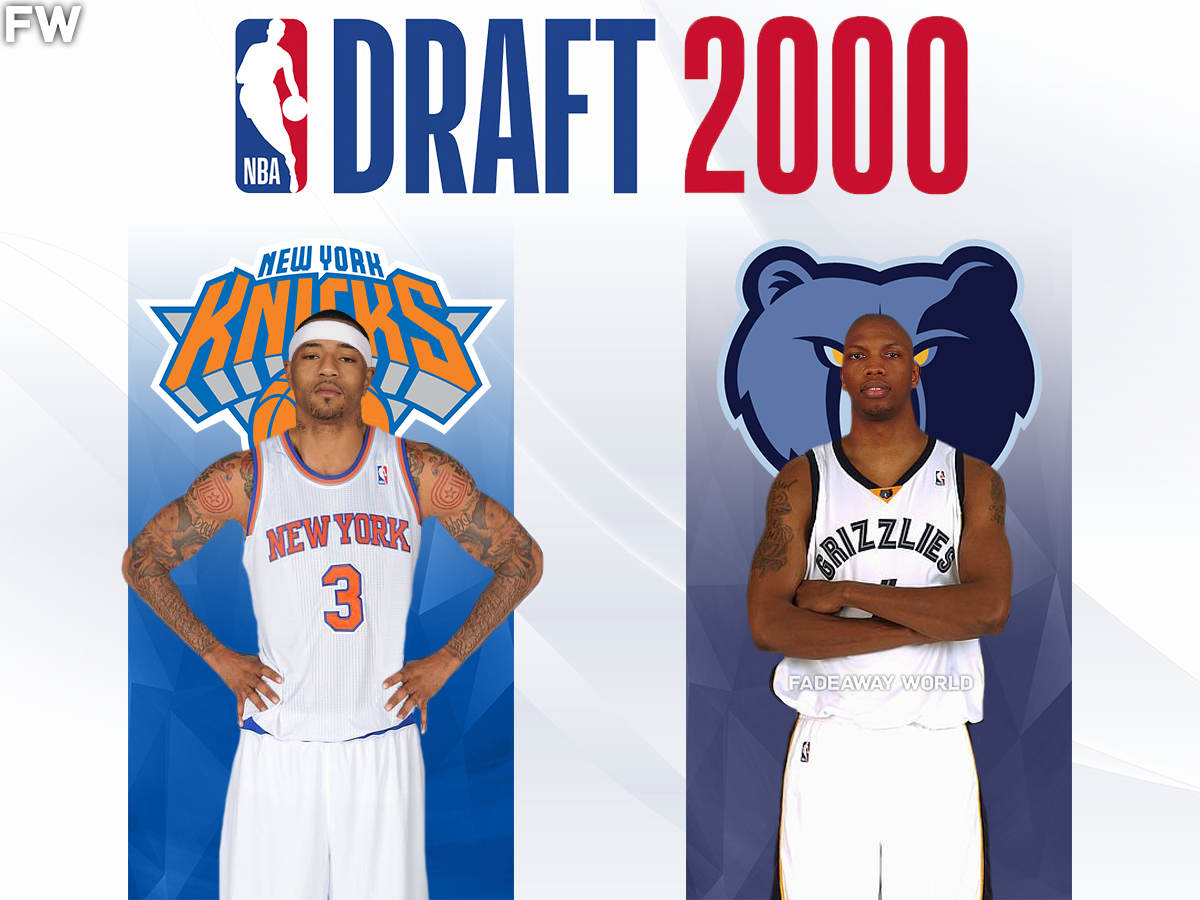
Kenyon Martin’s stats: 12.3 PPG, 6.8 RPG, 1.9 APG, 1.2 SPG, 1.3 BPG
Stromile Swift’s stats: 8.4 PPG, 4.6 RPG, 0.6 APG, 0.5 SPG, 1.4 BPG
The 2000 NBA Draft marked the selection of two promising power forwards, Kenyon Martin and Stromile Swift, as the first and second overall picks. Both players entered the league with expectations of becoming impactful forces in the frontcourt.
Kenyon Martin was chosen by the New Jersey Nets as the first overall pick, and he quickly established himself as a tenacious and athletic forward. Averaging 12.3 points, 6.8 rebounds, and showcasing defensive prowess with 1.2 steals and 1.3 blocks per game, Martin played a key role in the Nets’ success during the early 2000s. His relentless playing style and defensive acumen made him a valuable asset on the court.
Conversely, Stromile Swift, selected by the Vancouver Grizzlies (later Memphis Grizzlies), faced challenges in living up to the expectations associated with a high draft pick. While possessing notable shot-blocking ability with an average of 1.4 blocks per game, Swift’s overall impact fell short of the anticipated levels. With averages of 8.4 points and 4.6 rebounds, Swift struggled to become a consistent force in the frontcourt.
The divergent paths of Martin and Swift serve as a reminder of the unpredictable nature of player development in the NBA. Martin’s gritty style and two-way contributions elevated him to a prominent role on competitive teams, while Swift found himself navigating a career that didn’t fully realize the initial expectations set for a second overall pick.
3. Andrew Bogut & Marvin Williams (2005 NBA Draft)
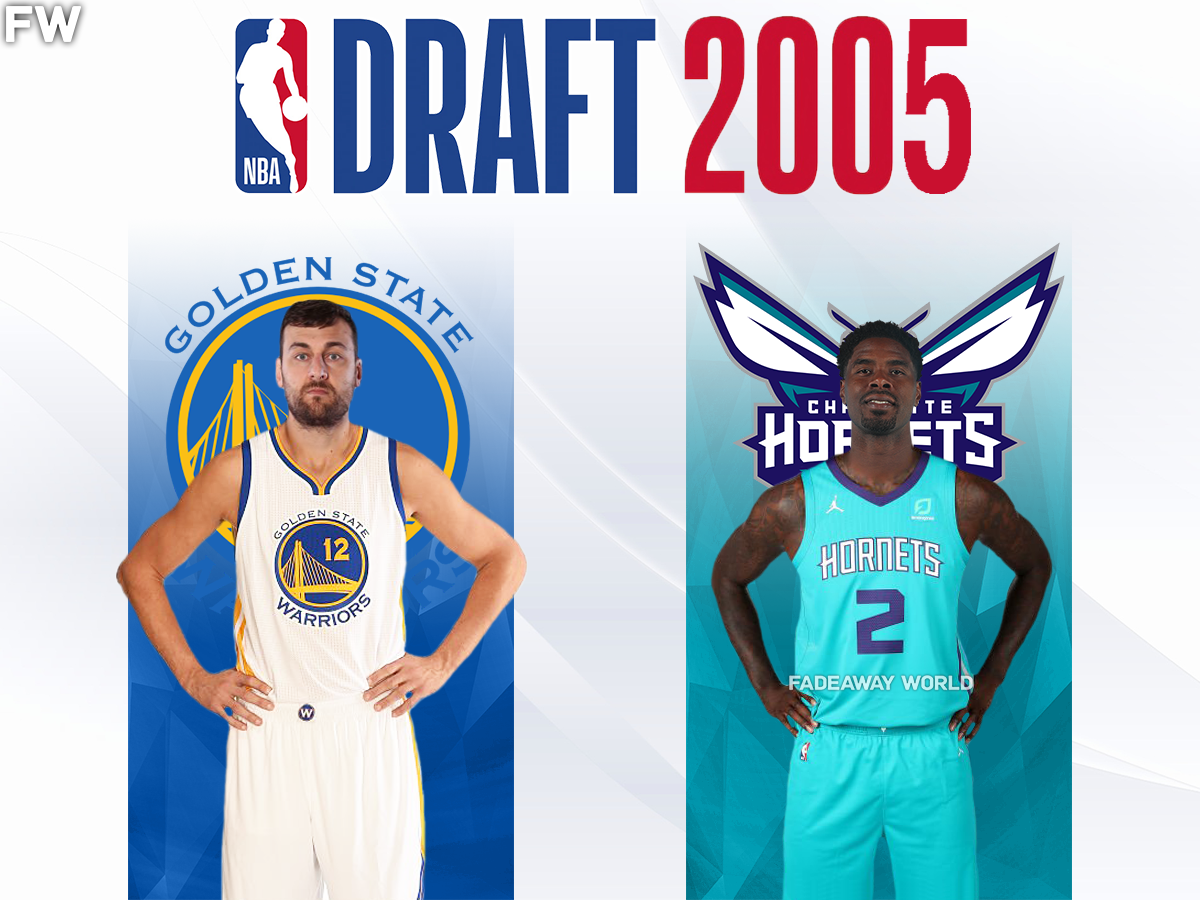
Andrew Bogut’s stats: 9.6 PPG, 8.7 RPG, 2.2 APG, 0.6 SPG, 1.5 BPG
Marvin Williams’ stats: 10.2 PPG, 5.2 RPG, 1.3 APG, 1.0 SPG, 0.6 BPG
The 2005 NBA Draft featured the selections of Andrew Bogut and Marvin Williams as the first and second overall picks, each bringing unique skills and potential to their respective teams.
Andrew Bogut, chosen by the Milwaukee Bucks with the first overall pick, quickly established himself as a reliable and skilled center. Averaging 9.6 points, 8.7 rebounds, and showcasing shot-blocking prowess with 1.5 blocks per game, Bogut became a key figure in the paint. His basketball IQ and passing ability set him apart, and he contributed to the Bucks’ success during his tenure with the team.
For a top pick, Bogut’s production was not exciting for the Bucks. The Australian big man played an important role for the franchise, but never blossomed into a star player at all.
On the flip side, Marvin Williams joined the Atlanta Hawks as the second overall pick, where he showcased versatility as a forward. Averaging 10.2 points and 5.2 rebounds per game, Williams contributed as a scoring threat and a solid defender. While his impact might not have reached the heights anticipated for a second-overall pick, Williams carved out a respectable career as a dependable role player.
As their careers unfolded, Bogut and Williams took divergent paths. Bogut’s basketball intelligence and skills contributed to playoff runs, including an NBA championship with the Golden State Warriors in 2015. Williams, while not achieving the same level of team success, remained a consistent and valued contributor throughout his career.
2. Anthony Bennett & Victor Oladipo (2013 NBA Draft)
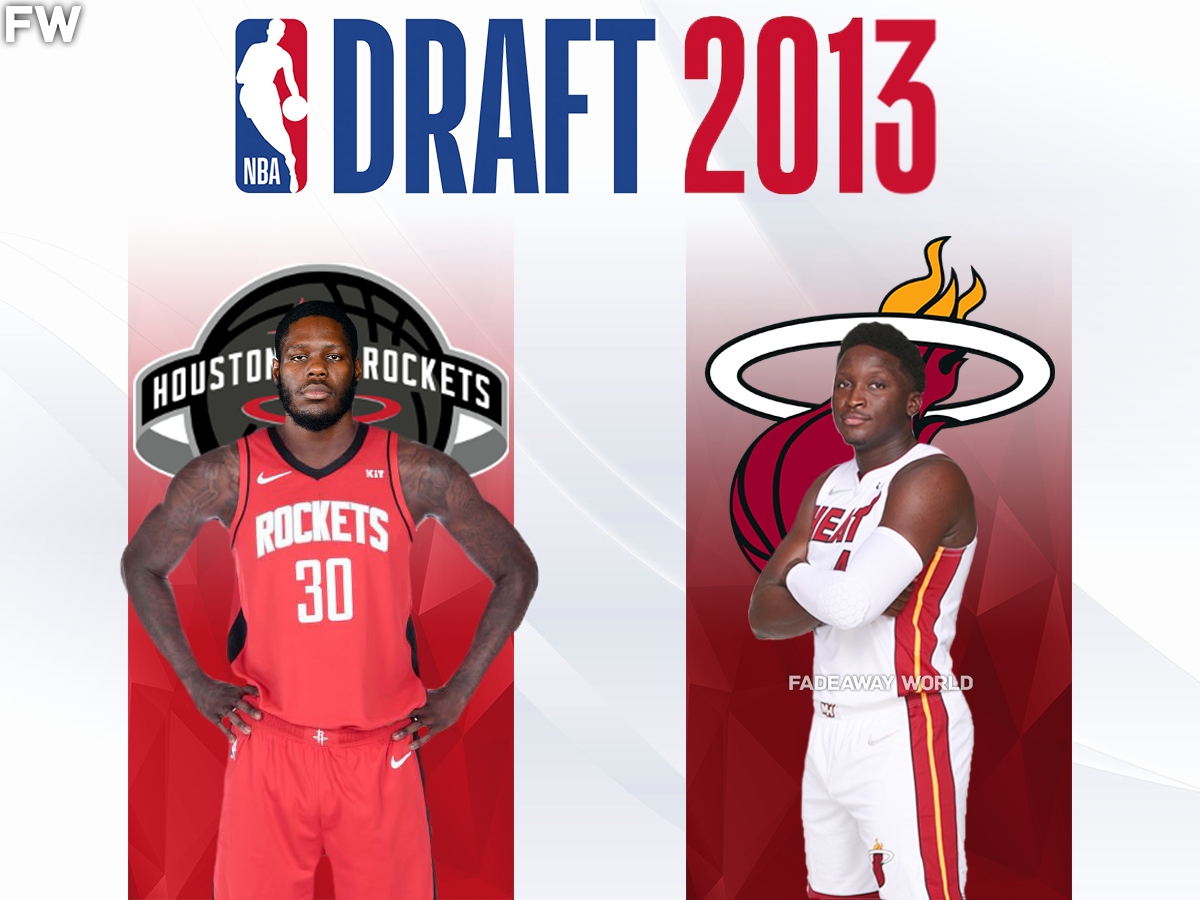
Anthony Bennett’s stats: 4.4 PPG, 3.1 RPG, 0.5 APG, 0.4 SPG, 0.2 BPG
Victor Oladipo’s stats: 16.9 PPG, 4.5 RPG, 3.9 APG, 1.6 SPG, 0.5 BPG
The 2013 NBA Draft witnessed the selection of Anthony Bennett as the first overall pick and Victor Oladipo as the second overall pick. Their journeys in the NBA, however, unfolded in vastly different ways, showcasing the unpredictability of draft outcomes.
Anthony Bennett entered the league with high expectations, becoming the first Canadian player to be selected at the top of the NBA Draft. However, his time in the league was marked by struggles to find a consistent role and make a significant impact. Averaging 4.4 points and 3.1 rebounds per game, Bennett faced challenges in meeting the expectations associated with a first-overall pick, ultimately bouncing around multiple teams before exiting the league.
Bennett played only 4 total seasons in the NBA until he left and went on to play overseas, marking him as one the worst No. 1 picks of All-Time in the history of the league.
On the contrary, Victor Oladipo quickly emerged as one of the bright spots from the 2013 draft class. Averaging 16.9 points, 4.5 rebounds, and 3.9 assists per game, Oladipo showcased his two-way abilities and rapidly developed into a dynamic guard. Oladipo showed promise on Orlando and Oklahoma, but never turned into an All-Star as he should have being the second-overall pick.
His defensive prowess, combined with his scoring and playmaking, earned him All-Star selections and established him as a cornerstone for the Indiana Pacers after he got traded from the Thunder. Sadly, injuries riddled his career in 2020-21, starting a journey of unavailability that hindered the great promise he showed in the past. With a move to the Heat, Oladipo couldn’t stay healthy for the last 2 years, being the end of a run that should’ve lasted more. Now, As a member of the Houston Rockets, Oladipo’s career keeps the tendency of being hindered by injury.
The tale of Bennett and Oladipo from the 2013 NBA Draft serves as a reminder that, despite the anticipation and excitement surrounding draft night, the subsequent journey in the league is laden with unforeseen challenges and opportunities that shape the players’ careers in unique ways.
1. Michael Olowokandi & Mike Bibby (1998 NBA Draft)
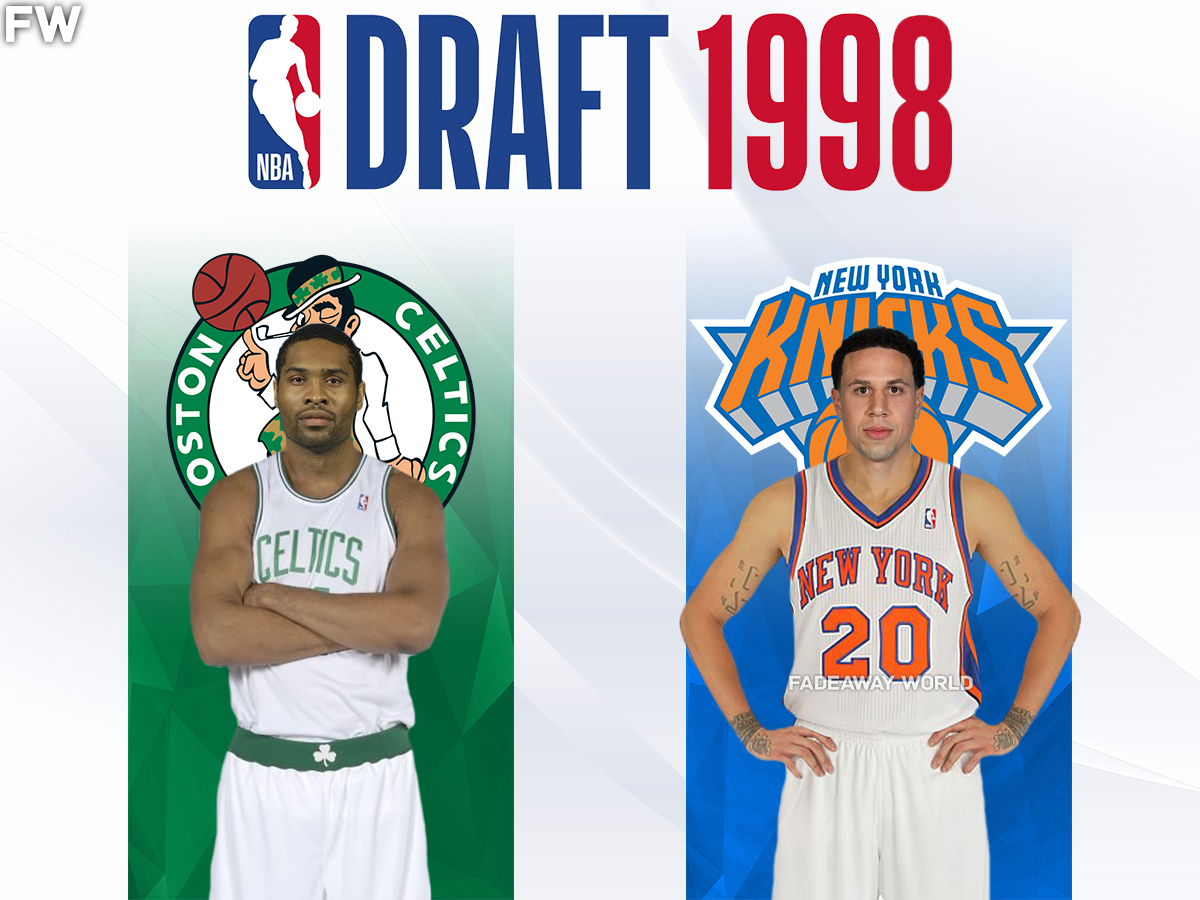
Michael Olowokandi’s stats: 8.3 PPG, 6.8 RPG, 0.7 APG, 0.5 SPG, 1.6 BPG
Mike Bibby’s stats: 14.7 PPG, 2.7 RPG, 5.5 APG, 1.2 SPG, 0.2 BPG
The 1998 NBA Draft marked the selections of Michael Olowokandi as the first overall pick and Mike Bibby as the second overall pick, each embarking on distinct journeys in the NBA.
Michael Olowokandi, chosen by the Los Angeles Clippers, entered the league with high expectations as a dominant center. Averaging 8.3 points, 6.8 rebounds, and showcasing shot-blocking skills with 1.6 blocks per game, Olowokandi faced challenges in meeting the lofty expectations associated with a first-overall pick. His impact on the court didn’t match the anticipation, and injuries further hindered his ability to make a lasting imprint in the league.
In contrast, Mike Bibby joined the Vancouver Grizzlies (later relocated to Memphis) as the second overall pick and quickly became a standout point guard. Averaging 14.7 points, 2.7 rebounds, and 5.5 assists per game, Bibby showcased scoring and playmaking abilities that solidified him as a key component for the teams he played for. Bibby’s leadership and clutch performances made him a respected figure in the league.
The divergent paths of Olowokandi and Bibby exemplify the uncertainties in the draft process and the varying impact players can have on the league. While Olowokandi faced challenges in realizing his potential, Bibby thrived as a floor general and played a pivotal role in the success of his teams.

